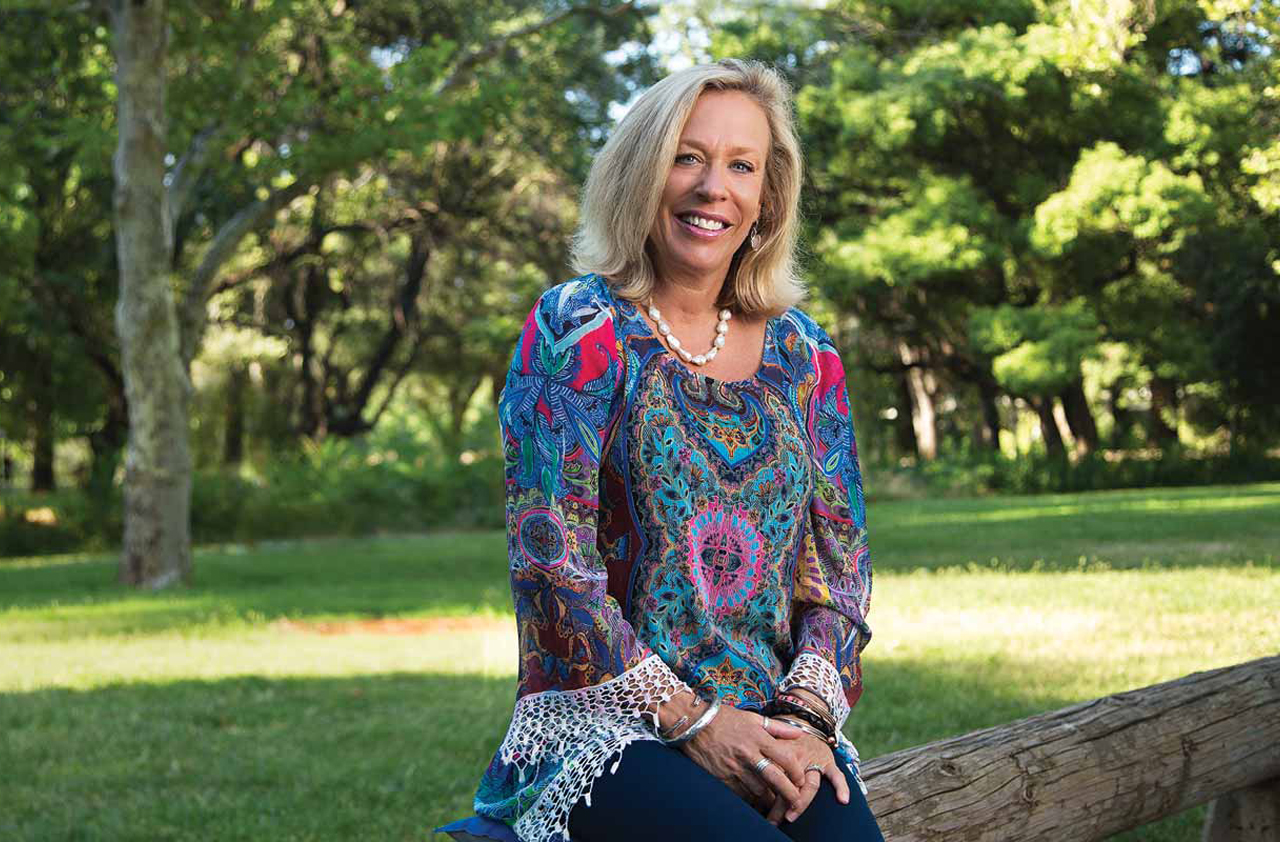What to Do When Your Term Life Insurance Is Expiring
Many families are discovering that a 20-year term for a life insurance policy isn’t enough.


In an ideal world, you buy life insurance when your kids are young or you’ve purchased your first home, and you need the coverage only for about 20 years. By the time your policy nears the end of its term, your kids are on their own, your house is mostly paid off, and you’ve accumulated enough money in retirement savings for your spouse to pay the bills if anything happened to you.
But these days, many people in their fifties are still supporting grown kids who graduated with student-loan debt, or they’ve refinanced their mortgage and locked in a new 30-year term. They may have been divorced and are now supporting a new set of kids. Or they still haven’t saved enough to retire comfortably. Their coverage is about to end, but they still need the security that term insurance provides.
“This is happening to thousands of people because 20-year term insurance first became popular about 20 years ago,” says John Ryan, CEO of Ryan Insurance Strategy Consultants in Greenwood Village, Colo., who works with fee-only financial advisers. Even though you can keep your policy beyond the initial term, the premiums jump enormously, and continue to increase. A 37-year-old man in good health who buys a $500,000 20-year term policy could pay about $360 per year for 20 years. But in year 21—at age 57—the premiums jump to $6,900 or more depending on the company, says Byron Udell, CEO of AccuQuote.com, an independent insurance brokerage.
From just $107.88 $24.99 for Kiplinger Personal Finance
Become a smarter, better informed investor. Subscribe from just $107.88 $24.99, plus get up to 4 Special Issues

Sign up for Kiplinger’s Free Newsletters
Profit and prosper with the best of expert advice on investing, taxes, retirement, personal finance and more - straight to your e-mail.
Profit and prosper with the best of expert advice - straight to your e-mail.
Fortunately, you have a number of options for extending your coverage, including some that didn’t exist when you bought insurance a couple of decades ago. Term insurance rates have decreased significantly over the past 20 years, and if you’re in your fifties or early sixties and relatively healthy, premiums for a new policy can still be affordable. Some policies even provide “living benefits,” which allow you to tap your death benefit early if you have a chronic illness, or they can double as long-term-care insurance. If you have health issues, you may be able to convert your current coverage to a permanent policy that remains in force for the rest of your life.
If your term life insurance policy is nearing the end of its term, don’t wait until it expires to review your needs. You have the most options while the policy is still in force.
Buy a new term policy
Term insurance prices have dropped over the past 20 years because of competition, the ease of comparing rates online, and medical advances that have led to longer life spans. You may be able to get a new policy that locks in a rate for 10 years or more and doesn’t cost much more than your current coverage. For example, a healthy 57-year-old man could buy a 10-year term policy that would provide $500,000 in coverage for about $1,151 a year. Or he could buy a 20-year term policy for about $2,050 a year, says Udell.
Hilary and David Graf bought 20-year term policies when they had their first child—and then they had five more kids. When their policies were about to expire five years ago, they were supporting most of their kids, who ranged in age from 15 to 22.
As a personal finance teacher at a high school near Richmond, Va., Hilary understood the importance of life insurance, and the couple started shopping for new policies. “We realized we were grossly underinsured,” she says. The Grafs worked with AccuQuote and found a Transamerica term policy with living benefits that would let them access cash from the death benefit early for certain medical conditions. Hilary bought a $750,000 20-year policy for about $1,600 a year, and David bought a similar policy for about $1,800 per year. “You don’t think you’re going to need it, but if something happens, you’re covered,” she says.
The decision to buy a policy with living benefits was prescient. Hilary, now 55, developed debilitating Lyme disease. She eventually left her job and went in search of successful treatment. After providing medical records to her insurance company, she received about $50,000, which helps her pay for treatment in California. The living benefits payout reduced her death benefit by about $150,000, but having the cash for health care was more important to her. “What a blessing this was for us,” she says. “I wish I could go back and talk to my students about this.”
Several insurance companies now offer chronic-illness riders. The specifics vary. They may pay out only for certain maladies—such as a heart attack or cancer—or they may pay out for a broad range of conditions. Some policies reduce the death benefit on a dollar-per-dollar basis. Others, such as Graf’s, reduce the death benefit on a case-by-case basis (hers was reduced by a 3-to-1 ratio).
Buy a new permanent policy
If you need life insurance for an unknown amount of time—you’re supporting a special-needs child, for example, or you want to leave a legacy for your family or a charity—you may want permanent insurance. If you’re relatively healthy, you may get a better deal by buying a new policy rather than converting your current term coverage. There are several kinds of permanent policies.
Guaranteed universal life provides the largest death benefit for the lowest level premiums. The policy doesn’t earn much cash value, but the premiums never change. A healthy 57-year-old man could pay about $7,000 per year for a $500,000 GUL policy, says David Eisenberg, of Quantum Insurance Services in Los Angeles.
Whole life has level premiums that tend to be at least double the annual cost of GUL. For example, a 57-year-old man could pay about $17,800 per year for a whole life policy that starts out with a $500,000 death benefit, then never pay any more premiums after age 70, says Eisenberg. The death benefit increases, and the policy also builds cash value that you can use for any reason. You can withdraw up to the amount you paid in premiums tax-free and borrow more through a policy loan that you never have to repay (it’s subtracted from the death benefit). Premiums will be lower—and the cash value at 70 much higher—if you start at age 50 or earlier.
A whole life policy offers a lot of flexibility. “Some people use one-third for retirement income, one-third for a legacy for their children, and one-third as a legacy for charity,” says Scott Sparks, a Northwestern Mutual wealth management advisor and CEO of Sparks Financial. The cash value grows based on the insurer’s investments; returns tend to be higher than short-term interest rates. But because of policy fees, it can take three or four years before your cash value starts to accumulate.
Long-term-care benefits
Many insurers now offer policies that combine life insurance and long-term-care coverage. These policies generally let you access a portion of your death benefit early if you need long-term care. You can tap the benefits if you require help with two out of six activities of daily living (such as bathing, eating or toileting) or if you have cognitive impairment—in other words, the same benefit triggers as for stand-alone long-term-care coverage. Unlike stand-alone policies, however, the premiums generally can’t increase.
“The sweet spot to buy these policies is from age 45 to 65,” says Udell. And the policies can be particularly attractive to single women, who often pay 50% more than men for stand-alone long-term-care policies.
With Lincoln Financial’s MoneyGuard, you can add long-term-care coverage that’s two or three times the value of your death benefit. A 50-year-old man with a couples discount would pay $10,500 per year until age 65 for a policy that provides a $250,000 death benefit and up to $750,000 in long-term-care benefits over six years (the first $250,000 is subtracted from the death benefit). A 50-year-old woman would pay slightly less.
Some policies let you access 2% to 4% of your death benefit every month for care for a modest increase in premiums. The feature adds an extra 10% to the premiums at John Hancock, for example, and about half of new buyers choose that option, says James Bowman, of John Hancock.
A strategy for younger buyers
The decisions you make when you buy life insurance in your twenties or thirties can help you avoid scrambling to find coverage before your term policy expires.
You could buy a permanent life insurance policy and never worry about the coverage expiring. But the premiums are much higher than the premiums for term insurance, and young families who start out with permanent insurance frequently buy too little coverage because that’s all they can afford.
“What we really need to focus on with younger families is the death benefit amount,” says Tim Maurer, director of adviser development for the BAM Alliance, a network of independent financial advisers. A 30-year term policy is also an option, but those premiums can be pricey, too.
A more cost-effective way to extend the coverage is to layer policies, says Maurer. Buy a 20-year term policy for the bulk of your coverage. That allows you to get a death benefit large enough to protect your family while your kids are at home and you’re making mortgage payments. “You want to have all of those years covered, but you might not need that much coverage for the whole time,” Mauer says. If you’d like coverage that lasts longer, you could also get a 30-year term with a smaller death benefit.
For example, a 35-year-old man could buy a $500,000, 20-year term policy for $250 per year and layer $250,000 of 30-year coverage for an additional $260 per year, which would cover him until age 65, says Udell. If you want some permanent coverage, too, you could add $100,000 of guaranteed universal life (GUL), which you can keep for your lifetime, for about $620 per year (whole life would cost about double that). A 35-year-old woman would pay about $215 per year for a $500,000, 20-year term policy and could get a $250,000, 30-year term policy for an additional $226 per year. She could add a $100,000 GUL policy for about $515 per year.
The conversion option
If you have health issues, premiums for a new term policy could be in the stratosphere. But most term policies let you convert to permanent insurance, which will remain in force for the rest of your life. You don’t need a new medical exam because premiums are based on your health when you bought your original policy.
However, there’s a big catch: You have a limited amount of time to take advantage of the conversion option. Some term policies let you convert to permanent coverage only within the first 10 years of the term; most let you convert for at least 15 years into the term.
Some insurers’ conversion options are better than others. You may be able to convert to any of the insurer’s permanent policies, or you may be limited to one policy that may have high fees.
Tell your agent about any medical issues up front. Before his clients apply for a new policy, John Ryan, of Ryan Insurance Strategy Consultants in Greenwood Village, Colo., interviews and prescreens them so he can tell them the rate they’re going to get—or that they’re uninsurable and have to convert.
Profit and prosper with the best of Kiplinger's advice on investing, taxes, retirement, personal finance and much more. Delivered daily. Enter your email in the box and click Sign Me Up.

As the "Ask Kim" columnist for Kiplinger's Personal Finance, Lankford receives hundreds of personal finance questions from readers every month. She is the author of Rescue Your Financial Life (McGraw-Hill, 2003), The Insurance Maze: How You Can Save Money on Insurance -- and Still Get the Coverage You Need (Kaplan, 2006), Kiplinger's Ask Kim for Money Smart Solutions (Kaplan, 2007) and The Kiplinger/BBB Personal Finance Guide for Military Families. She is frequently featured as a financial expert on television and radio, including NBC's Today Show, CNN, CNBC and National Public Radio.
-
 It's Beginning to Look a Lot Like a Santa Rally: Stock Market Today
It's Beginning to Look a Lot Like a Santa Rally: Stock Market TodayInvestors, traders and speculators are beginning to like the looks of a potential year-end rally.
-
 The 2026 Retirement Catch-Up Curveball: What High Earners Over 50 Need to Know Now
The 2026 Retirement Catch-Up Curveball: What High Earners Over 50 Need to Know NowUnlock the secrets of the 2026 retirement catch-up provisions: A must-read for high earners aged 50 and above.
-
 How Much a $100K Jumbo CD Earns You
How Much a $100K Jumbo CD Earns YouYou might be surprised at how fast a jumbo CD helps you reach your goals.
-
 9 Types of Insurance You Probably Don't Need
9 Types of Insurance You Probably Don't NeedFinancial Planning If you're paying for these types of insurance, you may be wasting your money. Here's what you need to know.
-
 Amazon Resale: Where Amazon Prime Returns Become Your Online Bargains
Amazon Resale: Where Amazon Prime Returns Become Your Online BargainsFeature Amazon Resale products may have some imperfections, but that often leads to wildly discounted prices.
-
 Roth IRA Contribution Limits for 2026
Roth IRA Contribution Limits for 2026Roth IRAs Roth IRAs allow you to save for retirement with after-tax dollars while you're working, and then withdraw those contributions and earnings tax-free when you retire. Here's a look at 2026 limits and income-based phaseouts.
-
 Four Tips for Renting Out Your Home on Airbnb
Four Tips for Renting Out Your Home on Airbnbreal estate Here's what you should know before listing your home on Airbnb.
-
 Five Ways to a Cheap Last-Minute Vacation
Five Ways to a Cheap Last-Minute VacationTravel It is possible to pull off a cheap last-minute vacation. Here are some tips to make it happen.
-
 How Much Life Insurance Do You Need?
How Much Life Insurance Do You Need?insurance When assessing how much life insurance you need, take a systematic approach instead of relying on rules of thumb.
-
 When Does Amazon Prime Day End in October? Everything We Know, Plus the Best Deals on Samsonite, Samsung and More
When Does Amazon Prime Day End in October? Everything We Know, Plus the Best Deals on Samsonite, Samsung and MoreAmazon Prime The Amazon Prime Big Deal Days sale ends soon. Here are the key details you need to know, plus some of our favorite deals members can shop before it's over.
-
 How to Shop for Life Insurance in 3 Easy Steps
How to Shop for Life Insurance in 3 Easy Stepsinsurance Shopping for life insurance? You may be able to estimate how much you need online, but that's just the start of your search.